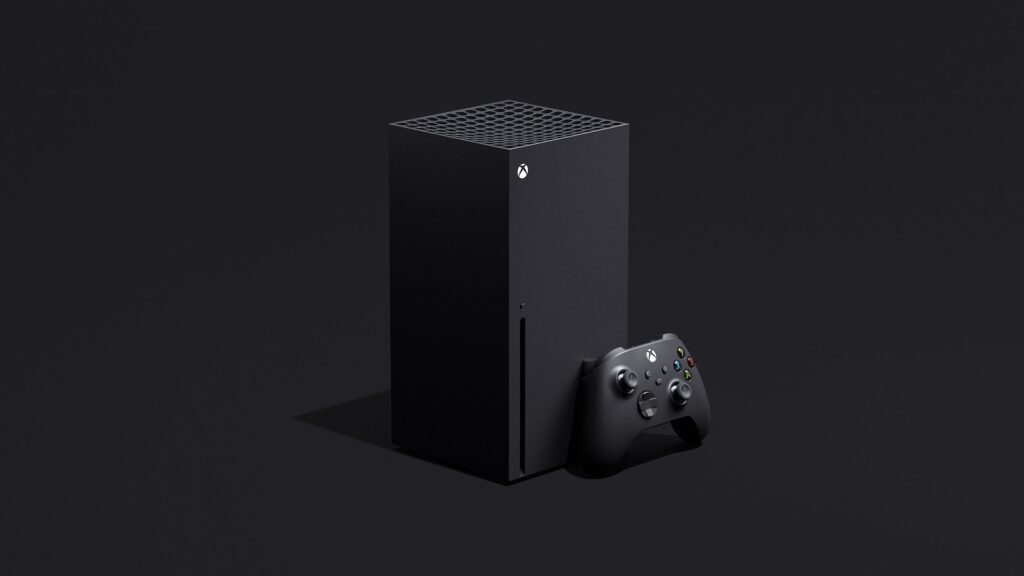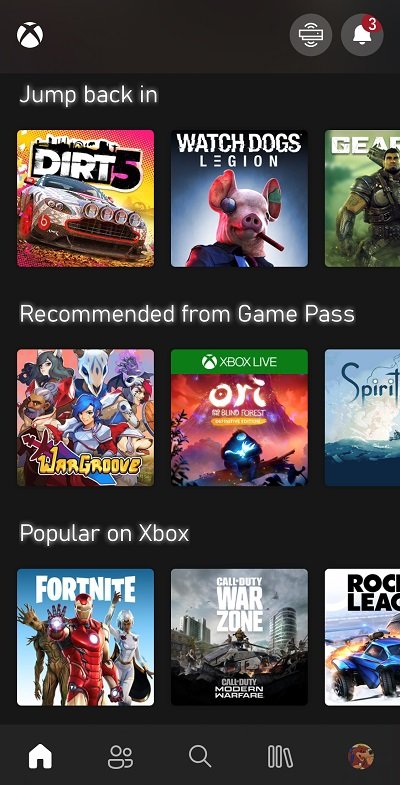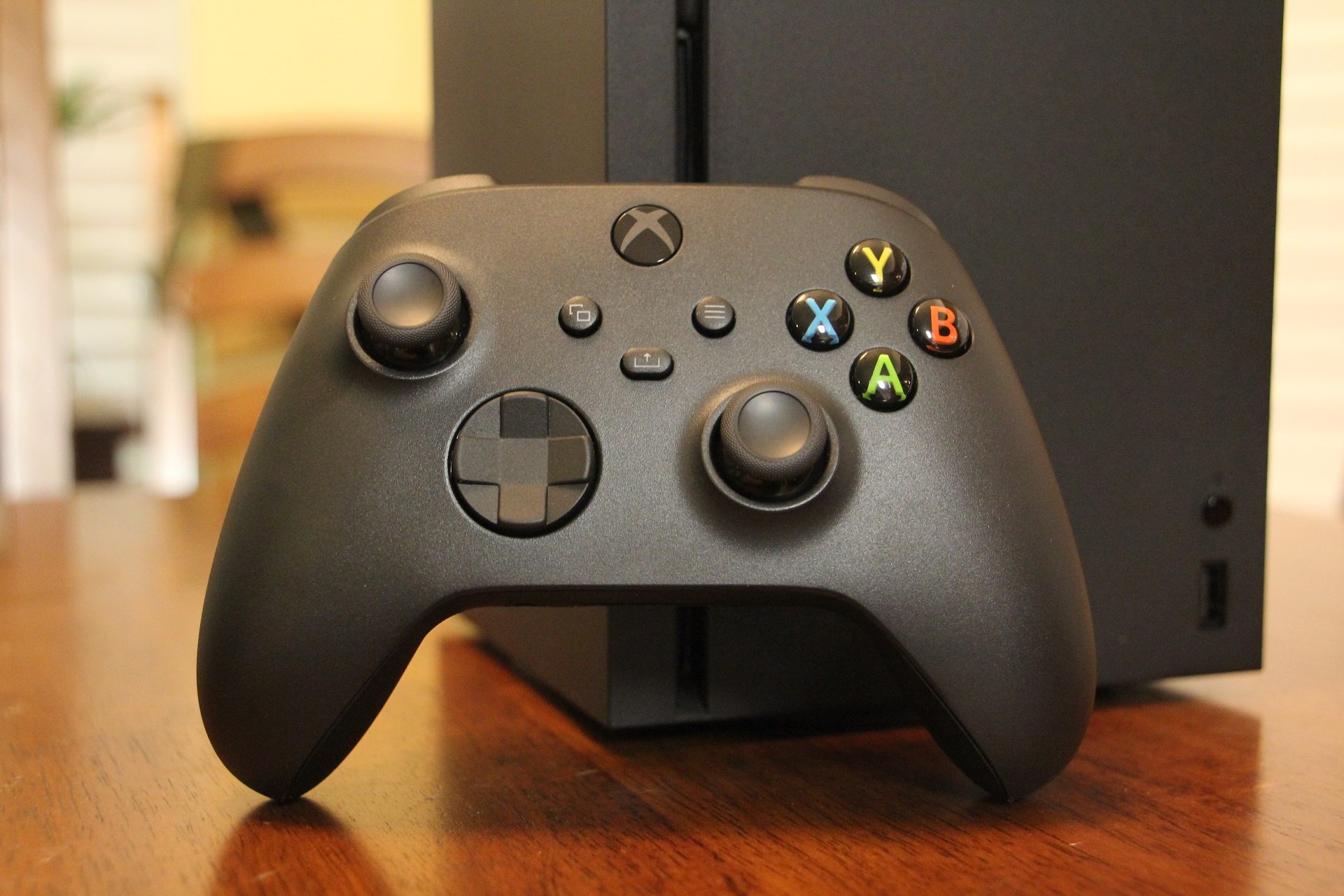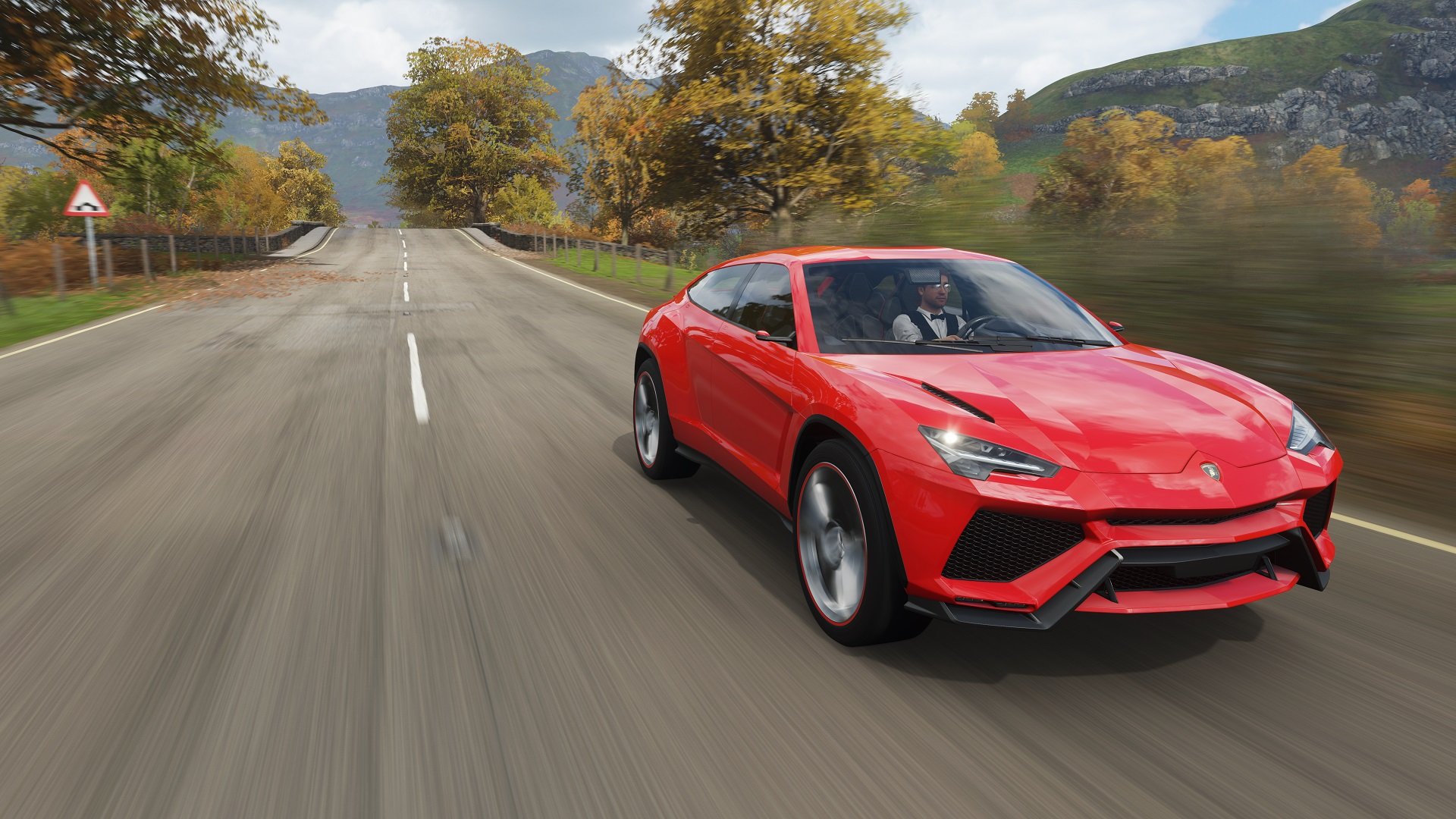
Note: GameDaily received an Xbox Series X from Microsoft for the purpose of this review.
There’s a notable transitional period that occurs at the start of every new console cycle, a span where critics, analysts, and consumers attempt to gauge the worth of next generation platforms. Historically, this worth is sought out in the quality of the software released with a new system: are the games fun? Are they likely to sell units? Do they take graphical advantage of the shiny new hardware?
By and large, it’s reasonable to expect this to be the case with the PlayStation 5. As a maker of video games, Sony has become notable for its strong lineup of first-party developers. Studios like Sony Santa Monica, Insomniac, and Naughty Dog helped propel the PlayStation 4 to wholly impressive sales numbers this generation, and Sony is leaning on this network again for the PS5: new entries in juggernaut franchises like God of War, Spider-Man, and Ratchet and Clank are already on the way.
Traditionally, Microsoft’s own first-party lineup has commanded less enthusiasm from consumers, although this sentiment has been challenged recently. A streak of acquisitions, culminating in the purchase of Bethesda parent company ZeniMax in September, has strengthened the stable of first-party Xbox devs. Still, the lead-up to the launch of the Series X and Series S consoles has been characterized less by software and more by a focus on tech, game services, and load times, a marked change from previous generational transitions.
Microsoft’s ace-in-the-hole is Game Pass, a subscription-based service that provides access to a rotating stable of games. The success of Game Pass has been exhaustively cataloged at this point, and it’s no surprise that it forms the core around which the Series X/S experience is built. Microsoft has been touting an Xbox “ecosystem” in the lead-up to the console launch, a multi-platform approach to user acquisition across consoles, PC, and now mobile.
For Andrew Willans, game director at Sumo Digital for the upcoming Hood: Outlaws and Legends, Game Pass and the Xbox ecosystem is likely to have the most substantial long-term impact on how we acquire and enjoy games.
“The way we consume media has changed so radically over the past decade, and Game Pass is at the forefront of this in terms of quality, quantity and value proposition,” Willans told GameDaily. “Even in 2020 there’s still a significant proportion of gamers (myself included) without access to the high speed network connections essential for 4K 60fps streaming. With Game Pass I never have to worry about this. It’s become second nature to stick a bunch of titles on to download as they arrive, and then jump in and out of them to find the ones I like, and more importantly, the ones I’m in the mood to play at that time.”
For Mat Piscatella, executive director of games at analyst provider NPD Group, Microsoft’s marketing has been impressive in this regard.
“I think Microsoft has done a remarkable job of repositioning Xbox in the marketplace in advance of the launch of the Xbox Series consoles,” Piscatella told GameDaily. “Xbox Game Pass Ultimate, xCloud, and even the Xbox app on Windows 10 are expanding the addressable market that Microsoft can reach in gaming. Xbox is no longer limited to just the console installed base; it can reach players across an almost limitless number of additional devices.”
In my personal experience with the Xbox Series X over the last couple weeks, the integration between the console and the mobile Xbox app is very smooth and impressive. The idea was to make the app an extension of the console, a sort of control center where you can browse games, view, edit, and post your screenshots and videos (captured via the controller’s handy new “share” button), and even purchase and download games to your console remotely.

For the most part, these features functioned very well, although the posting of screenshots and videos was not allowed under embargo. However, viewing them on the app was convenient and novel, a welcome change over the previous generation’s comparatively-cumbersome sharing functionality.
For Piscatella, this “accessible anywhere” nature of the Series S/X and the app is one of the primary selling points of the system.
“Microsoft has done a fantastic job on embracing the idea that content should travel with the player regardless of the device they’d like to play on,” he said. “As the number of video game players and hours played continue to expand, these offerings combine to put the Xbox brand in great position for the future, so long as great games are made available on the Xbox platform.”
For Mariia Shelkova, systems programmer at Systemic Reaction, a Swedish developer that is part of the Avalanche Studios Group, the most exciting part of a new console generation is the upgraded hardware capabilities.
“One of the things that impresses me most is its graphics capabilities,” Shelkova told GameDaily. “To see the next-gen GPU allow the possibility to run games natively at 4k/60 fps, and have support for DirectX Raytracing on a console is pretty remarkable. Sure the capabilities of Xbox One X have been quite notable as well, but this is definitely a new step in console gaming.”
To Shelkova’s point, the games I’ve played on the Series X have all looked fantastic, especially the “optimized” versions of last-gen games that have been upscaled in 4K–Gears 5 in particular was silky smooth and crystal clear. The spec sheet for the Series X claims frames-per-second of up to 120, a bold claim to be sure, and it will be interesting to see how devs take advantage of that potential.
For many, the combination of Raytracing, 4K resolution, and more substantial frame rates, makes the Series X a competitor for the PC market, a notoriously expensive segment. Skelkova said that at $499, the Series X is bound to become a more attractive gaming destination for many would-be PC enthusiasts.
“New generation consoles are going to make video game worlds more affordable,” Shelkova explained. “Before this, if you’d want to have the same high graphics and computational power, you’d need to invest in a gaming PC, which is usually pricey. Now, with these new consoles, more people are going to have access to those better graphics, that higher performance and ultimately a better experience overall. And that’s great for everyone.”
Willans said that as consumers, we’ve come to expect a substantial graphical boost between generations, but the frame rate is far more important to smooth gameplay.
“Usually this is a developer’s nightmare as we constantly juggle between realizing our artistic vision and balancing that with a smooth and consistent frame rate which is necessary for most games, but arguably essential for multiplayer games,” Willans explained. “The extra horsepower the Series X offers means we can deliver on both these goals.”
It’s also important to know just how quiet the Series X runs. I had to get up close to the console to even hear the whisper-quiet fan at all. No doubt this is in part thanks to the system’s split motherboard, which allows for more airflow in the box itself, thus reducing the need for a fan to be constantly running. As an almost-exclusively PS4 player, this is an extremely welcome improvement .

While the graphical capabilities of the hardware are certainly very impressive, the big game-changer this time around is the speed. Microsoft has touted its NVMe solid-state hard drives (SSD), claiming that they will result in a notable drop in loading times. This hardware package has been dubbed “Xbox Velocity Architecture” by Microsoft, and is the most exciting aspect of the Series X and Series S for Tim Willits, CEO of Saber Interactive.
“The Series X’s raw power is quite impressive, but for me, I love the NVMe SSDs, which will cut loading times down to almost nothing,” Willits told GameDaily. “I hate waiting for a game to load, and Microsoft has taken great strides to make this almost go away.”
Joacim Jacobsson, technical director at Systemic Reaction, echoed Willits’ point.
“There are many reasons to be excited about Series X, but I feel the most exciting thing for us, albeit with a very small margin, is probably the hard drive and its speed,” Jacobsson told GameDaily. “It really is a huge leap in performance, and with our background doing open world games for the past 16 years we know all too well the limits the speed of the hard drive imposes. The performance characteristics of the Series X hard drive will allow us to break many barriers that have held us back in the past.”
For my money, this is the most impressive–and noticeable–feature of the Series X. Microsoft has largely delivered on the promises of lightning-fast console bootup and near-instant load times. While in standby mode, mere seconds pass between pressing the power button on the Xbox Wireless Controller to being able to navigate the home screen. From there, it’s another few seconds between choosing a game and actually playing it. To get an idea of just how fast the Series X was, I went back to my PlayStation 4 to check load times and the difference was night and day.
From a developer perspective, the speed of the SSDs and the subsequent reduction in load times belies the potential for more efficient processing, which may result in smaller installs and patches, according to Jacobsson.
“Long term it will mean a drastic change in how we organize content for our games while increasing quality and the possible variations in our game worlds,” he said.
“It’s great to not have to spend as much time writing efficient loading code,” Shelkova added.
There is a bit of an unexpected side effect to these ultra-fast load times, though: loading screen tooltips come and go far too fast to be properly read. This is the definition of a good problem to have, I admit, but it feels like a quirky and notable thing to mention here.
Another qualm I have with the Series X is its prohibitively expensive storage expansion strategy. The Series X ships with a 1 TB harddrive, which will no doubt fill up fast in this age of enormous game download sizes. To add more storage space, you’ll have the option to purchase a specially-designed expansion card that retails for more than $200 apiece, a rather disappointing conceit. The better choice is to simply use an external USB HDD, which the Series X allows for.
Meanwhile, the new Xbox Wireless Controller feels great in the hands. It’s just marginally smaller than the current Xbox One controllers, and boasts a few welcome improvements. Most notably, the grips and triggers are textured, and the directional pad is more pronounced. The rumble is also a marked step up from last gen’s, making racing in Dirt 5 and brawling in Watch Dogs: Legion feel just that much more immersive.

Elsewhere, the Series X’s SSD makes possible a feature that Microsoft has dubbed “Quick Resume.” It’s the ability to transition between games by placing them in a suspended state when you exit to the main menu. As promised, it’s a legitimately impressive bit of tech magic. Switching back-and-forth between demanding games like Doom Eternal, Madden NFL 21, and Monster Hunter: World is admittedly thrilling, and is one of my personal favorite features of the console.
Another aspect of the Series X that excites Willits is Microsoft’s Smart Delivery feature, a system that automatically detects the most optimized version of a game depending on the platform you’re using, making it part of Microsoft’s substantial backwards compatibility efforts.
“For me personally, I love the fact that my entire Xbox library just comes along to the new platform,” Willits said. “I can just upgrade to the new console and start playing where I left off–but with a better experience.”
Willans also expressed enthusiasm for the feature: “I’m really impressed with the Smart Delivery system. Ensuring that I’m always running the best version of the game for my console is a really progressive way of dealing with the multiple sub-platforms which have become the new norm for console gaming.”
For Jacobsson, the kind of backwards compatibility promised by Microsoft, coupled with the potential to play anywhere via xCloud, illustrates a blurring of the lines between hardware generations.
“We are more or less seeing the end of the hard generation break that a new console normally brings,” Jacobsson said. “Old games will stay relevant for far longer, and with Series X/S launching as two hardware SKUs at reasonable price-points, new games start with a larger potential audience than ever before. Of course, if this becomes the norm for the long-term will remain to be seen.”
For Piscatella, this is the biggest potential exhibited by the Series X. Between xCloud and Smart Delivery, the generational divide is growing thinner. Of course, going into the Series X/S launch, Microsoft made no secret of its intentions in this regard.
“The data suggests that we’re moving towards a future in gaming where access to content is more ubiquitous, where the tech arms race powering the games becomes slightly less important, and the wide availability and broad appeal of content even more so,” Piscatella said. “In this respect I think Xbox is in a very strong position with the devices and services it is bringing to market.”

A console is only as good as its games, though, and the Microsoft-exclusive launch lineup is notably lacking. The company may have made a number of acquisitions recently, but the fruits of that labor aren’t exactly ripe just yet.
“It all really comes down to the games, and that is going to be the real test,” Piscatella continued. “The studio acquisitions in recent years suggest that the potential for Xbox over the coming years is immense. Now it all comes down to execution.”
Still, there’s a lot to enjoy on day one. Between a smorgasbord of backwards compatible games, and a host of hotly-anticipated multiplatform titles like Yakuza: Like a Dragon, Assassin’s Creed: Valhalla and Call of Duty: Black Ops Cold War on the way, there is no shortage of entertainment to be had, even if we have to wait a bit longer for Halo: Infinite.Besides, I’ve been too enamoured by Quick Resume and the almost non-existent loading times to decry any supposed lack of new software.
And in the end, these are the most exciting features–the quality of life stuff that removes the barriers to playing games. After spending a few weeks with the Series X, it’s become hard to return to previous generation consoles and sit through minutes-long load times, or have to think hard about whether or not switching games is worth the wait. It’s too early to tell when or if this novelty will wear off, but hopefully by that time Microsoft will have rolled out some grade-A first-party software.
In all, this console transition feels very different from those previous. Technology has reached a point of diminishing returns in terms of graphical capabilities, meaning we’re talking less about how games look, and more about how they run, as well as the performance and speed of new consoles. To that end, Microsoft has knocked it out of the park.
Sam, the Editor-in-Chief of GameDaily.biz, is a former freelance game reporter. He's been seen at IGN, PCGamesN, PCGamer, Unwinnable, and many more. When not writing about games, he is most likely taking care of his two dogs or pretending to know a lot about artisan coffee. Get in touch with Sam by emailing him at sdesatoff@rektglobal.com or follow him on Twitter.
 GameDaily.biz © 2025 | All Rights Reserved.
GameDaily.biz © 2025 | All Rights Reserved.